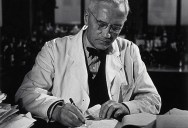This Day In History – September 28th

FRANCE WORLD’S 1ST COUNTRY TO EMANCIPATE JEWS – SEPT. 28, 1791

Jewish emancipation was the external and internal process of freeing the Jewish people of Europe, including recognition of their rights as equal citizens, and the formal granting of citizenship as individuals; it occurred gradually between the late 18th century and the early 20th century. Jewish emancipation followed the Age of Enlightenment and the concurrent Jewish enlightenment and grew by the abolition of discriminatory laws applied specifically against Jews in their various countries.
Before the emancipation, most Jews were isolated in residential areas from the rest of the society; thus, emancipation was a major goal of European Jews of that time and internally stressed integration and broader education. This led to their active participation within wider European civil society and recognition of Jews as citizens. Jews emigrated to countries offering better opportunities, such as Britain and the Americas. Later, European Jews turned to revolutionary movements, especially when faced with oppressive regimes such as the Russian Empire, such as Socialism and Zionism, when faced with continuing anti-Semitism.
On September 28, 1791, France became the first country of the world to emancipate its Jewish population. Napoleon also freed the Jews in areas he conquered in Europe. But, it was not until the revolutions of the mid-19th century that Jewish political movements would begin to persuade governments in Great Britain, Central and Eastern Europe to grant equal rights to Jews. [Source]
SIR ALEXANDER FLEMING DISCOVERS PENICILLIN – SEPT. 28, 1928

The discovery of penicillin is attributed to Scottish scientist and Nobel laureate Sir Alexander Fleming (6 August 1881 – 11 March 1955) on September 28, 1928. He showed that, if Penicillium notatum were grown in the appropriate substrate, it would exude a substance with antibiotic properties, which he dubbed penicillin. This serendipitous observation began the modern era of antibiotic discovery. The development of penicillin for use as a medicine is attributed to the Australian Nobel laureate Howard Walter Florey together with the German Nobel laureate Ernst Chain and the English biochemist Norman Heatley. [Source]
In 1999, Time magazine named Fleming one of the 100 Most Important People of the 20th Century for his discovery of penicillin, and stated:
It was a discovery that would change the course of history. The active ingredient in that mould, which Fleming named penicillin, turned out to be an infection-fighting agent of enormous potency. When it was finally recognised for what it was, the most efficacious life-saving drug in the world, penicillin would alter forever the treatment of bacterial infections. By the middle of the century, Fleming’s discovery had spawned a huge pharmaceutical industry, churning out synthetic penicillins that would conquer some of mankind’s most ancient scourges, including syphilis, gangrene and tuberculosis. [Source]


MS ESTONIA SINKS CLAIMING 852 LIVES – SEPTEMBER 28, 1994

Photograph by Accident Investigation Board Finland
The MS Estonia was a cruise ferry built in 1980 at the German shipyard Meyer Werft in Papenburg. The ship’s sinking in the Baltic Sea on 28 September 1994 claimed 852 lives and was one of the worst maritime disasters of the 20th century. It is the deadliest shipwreck disaster to have occurred in the Baltic Sea in peacetime.
The Estonia disaster occurred as the ship was crossing the Baltic Sea, en route from Tallinn, Estonia, to Stockholm. She was carrying 989 people: 803 passengers and 186 crew. Most of the passengers were Scandinavian, while most of the crew members were Estonian.
According to the final disaster report the weather was rough, with a wind of 15 to 20 metres per second (29 to 39 kn; 34 to 45 mph), force 7–8 on the Beaufort scale and a significant wave height of 3 to 4 metres (9.8 to 13 ft). The first sign of trouble onboard the Estonia was a metallic bang caused by a heavy wave hitting the bow doors around 01:00. At about 01:15, the visor separated and the ship took on a heavy starboard list (initial 30 to 40 degrees, but by 01:30, the ship had rolled 90 degrees) as water flooded into the vehicle deck.[10] Estonia was turned to port and slowed before her four engines cut out completely.
Of the 989 on board, 138 were rescued alive, but one died later in the hospital. Ships rescued 34 and helicopters 104. The accident claimed 852 lives (501 Swedes, 285 Estonians, 17 Latvians, 10 Finns and 44 people of other nationalities: 1 from Belarus, 1 from Canada, 1 from France, 1 from the Netherlands, 1 from Nigeria, 1 from Ukraine, 1 from United Kingdom, 2 from Morocco, 3 from Lithuania, 5 from Denmark, 6 from Norway, 10 from Germany, 11 from Russia), by drowning and hypothermia (the water temperature was 10–11 °C/50–52 °F). [Source]

Photograph by CsTom
The Katkenud liin (Broken line) is a monument to the victims of the M/S Estonia 1994 sinking. The missing middle section represents the sudden end of the lives of the victims. It is in located in Tallinn, Estonia, and was designed by Riho Luuse and Jaan Saar, completed in September 28 1996.

MS Estonia Memorial in Stockholm | Photograph by Tage Olsin
SPACEX LAUNCHES FIRST PRIVATE SPACECRAFT, THE FALCON 1, INTO ORBIT – SEPTEMBER 28, 2008

Photograph via SpaceX
The Falcon 1 is a partially reusable launch system designed and manufactured by SpaceX, a space transportation company in Hawthorne, California. It is the first successful fully liquid-propelled orbital launch vehicle developed with private funding. The Falcon 1 achieved orbit on its fourth attempt, on 28 September 2008, with a mass simulator as a payload. On 14 July 2009, Falcon 1 successfully delivered the Malaysian RazakSAT satellite to orbit on SpaceX’s first commercial launch (fifth launch overall). [Source]

Photograph by SpaceX
NOTABLE DEATHS – SEPTEMBER 28

From left to right: Louis Pasteur, Edwin Hubble, Pope Jon Paul I
Louis Pasteur (December 27, 1822 – September 28, 1895) was a French chemist and microbiologist born in Dole. He is remembered for his remarkable breakthroughs in the causes and preventions of diseases. His discoveries reduced mortality from puerperal fever, and he created the first vaccine for rabies and anthrax. His experiments supported the germ theory of disease. He was best known to the general public for inventing a method to stop milk and wine from causing sickness, a process that came to be called pasteurization. He is regarded as one of the three main founders of microbiology, together with Ferdinand Cohn and Robert Koch. Pasteur also made many discoveries in the field of chemistry, most notably the molecular basis for the asymmetry of certain crystals. [Source]
Edwin Powell Hubble (November 20, 1889 – September 28, 1953) was an American astronomer who profoundly changed the understanding of the universe by confirming the existence of galaxies other than our own, the Milky Way. He also considered the idea that the degree of “Doppler shift” (specifically “redshift”) observed in the light spectra from other galaxies increased in proportion to a particular galaxy’s distance from Earth. This relationship became known as Hubble’s law. The Doppler shift interpretation of the observed redshift had been proposed earlier by Vesto Slipher, whose data Hubble used. [Source]
Pope John Paul I, born Albino Luciani, (17 October 1912 – 28 September 1978), reigned as Pope of the Catholic Church and as Sovereign of Vatican City from 26 August 1978 until his death 33 days later. His reign is among the shortest in papal history, resulting in the most recent Year of Three Popes. John Paul I was the first Pope to be born in the 20th century, and was also the last Pope to die in it. [Source]
NOTABLE DEATHS Continued – SEPTEMBER 28

From left to right: Miles Davis, Mohammad Najibullah, Pierre Trudeau
Miles Dewey Davis III (May 26, 1926 – September 28, 1991) was an American jazz musician, trumpeter, bandleader, and composer. Widely considered one of the most influential musicians of the 20th century, Miles Davis was, with his musical groups, at the forefront of several major developments in jazz music, including bebop, cool jazz, hard bop, modal jazz, and jazz fusion.
Many well-known musicians rose to prominence as members of Davis’ ensembles, including saxophonists Gerry Mulligan, John Coltrane, Cannonball Adderley, George Coleman, Wayne Shorter, Dave Liebman, Branford Marsalis and Kenny Garrett; trombonist J. J. Johnson; pianists Horace Silver, Red Garland, Wynton Kelly, Bill Evans, Herbie Hancock, Joe Zawinul, Chick Corea, Keith Jarrett and Kei Akagi; guitarists John McLaughlin, Pete Cosey, John Scofield and Mike Stern; bassists Paul Chambers, Ron Carter, Dave Holland, Marcus Miller and Darryl Jones; and drummers Elvin Jones, Philly Joe Jones, Jimmy Cobb, Tony Williams, Billy Cobham, Jack DeJohnette, and Al Foster. Davis was inducted into the Rock and Roll Hall of Fame in 2006. [Source]
Mohammad Najibullah Ahmadzai, originally merely Najibullah, (August 6, 1947 – September 28, 1996) was the fourth and last President of the Soviet-backed Democratic Republic of Afghanistan. He is also considered the second President of the Republic of Afghanistan before his eventual torture and public assassination by the Taliban.
Joseph Philippe Pierre Yves Elliott Trudeau, (October 18, 1919 – September 28, 2000), usually known as Pierre Trudeau or Pierre Elliott Trudeau, was the 15th Prime Minister of Canada from April 20, 1968 to June 4, 1979, and again from March 3, 1980 to June 30, 1984. Trudeau began his political career campaigning for socialist ideals, but he eventually joined the Liberal Party of Canada when he entered federal politics in the 1960s. He was appointed as Lester Pearson’s Parliamentary Secretary, and later became his Minister of Justice.
From the late 1960s until the mid-1980s, he dominated the Canadian political scene and aroused passionate reactions. “Reason before passion” was his personal motto. He retired from politics in 1984, and John Turner succeeded him as Prime Minister. Admirers praise the force of Trudeau’s intellect and they salute his political acumen in preserving national unity against Quebec separatists, suppressing a violent revolt, and establishing the Charter of Rights and Freedoms within Canada’s constitution. [Source]
Trending on TwistedSifter




